The history of the current independent Ukrainian state is considered to date back to August 24, 1991, when the Verkhovna Rada adopted the Act of Declaration of Independence of Ukraine. Since then, many different events have happened on Earth, but the sky has continued to give us interesting and picturesque phenomena. Let’s try to recall the most outstanding ones that could be observed from the territory of our country over the past 32 years.
Sun and Moon
Our natural moon moves around the Earth in an elliptical orbit, constantly changing under the influence of the gravity of the Sun and planets, and at times comes especially close to us. On November 14, 2016, the centers of the Earth and the Moon were separated by 356,509 km — this was the smallest distance between them since the middle of the XX century. On March 14, 2002, this indicator, on the contrary, reached the maximum for the previous 10 years and amounted to 406,705 km.
To see the Moon against the background of the disk of the sun, residents of independent Ukraine had to wait for May 21, 1993 — then a partial solar eclipse was observed in the Northern Hemisphere of the Earth. In Kyiv, the sun looked only a little “chipped”, since it was covered by a lunar disk less than 10% of the diameter. In the north of Ukraine, the phase was slightly larger and reached 13%.
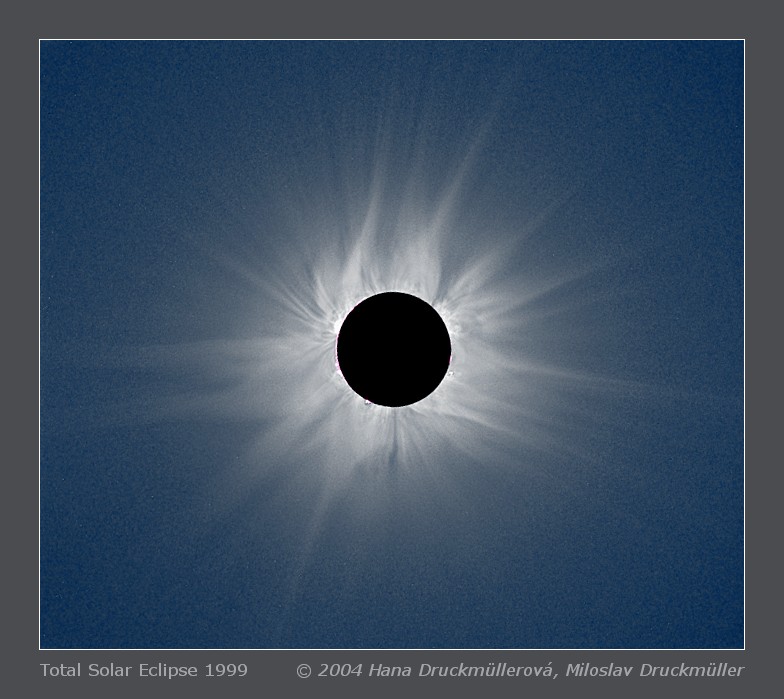
On August 11, 1999, the moon’s shadow passed through Europe, Turkey, the Middle East and India. Almost a billion people in 16 countries were able to see the total solar eclipse. In the south of the Odesa region, its partial phases of up to 97% were observed. It was the biggest “occultation” of the Sun by the Moon during the independence of Ukraine to this day, but still it is not enough for the appearance of the Solar Corona. In Kyiv, the magnitude of the eclipse was 83%.
The eclipse of June 1, 2030, in the Crimea and in the south of Donetsk region will be annular with a phase of 94.5% — the moon will completely enter the disk of our luminary, but since its apparent diameter will be smaller than the diameter of the Sun, a bright solar ring will remain around it. The nearest total eclipse on the territory of Ukraine is expected in the distant 2061.
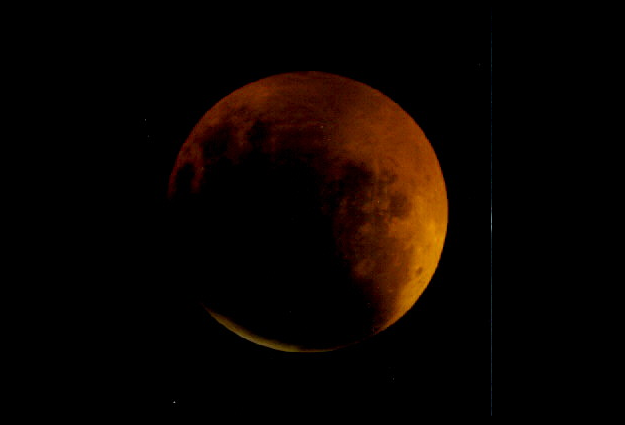
With lunar eclipses, Ukraine is “lucky” a little more. Already on December 9, 1992 — a year and one day after the Belovezha Accords, which put an end to the USSR — the Moon completely plunged into the earth’s shadow, and 3 hours and 29 minutes passed from the beginning of entering it to the end of the exit. Unfortunately, there were clouds over most of the Ukrainian lands that night, and few managed to see this celestial phenomenon.
And on the night of July 27-28, 2018, the longest total lunar eclipse of the XXI century was visible from the beginning to the end from the territory of Ukraine — its shadow phase lasted almost 3 hours and 55 minutes.
Mars
On the same day, July 27, 2018, there was an opposition of Mars, and not a simple one, but a great one — it occurred near perihelion, when the Red Planet was approaching the point of its orbit closest to the Sun. Accordingly, it came quite close to the Earth and shone in our sky as a very bright orange star low over the southern horizon.
However, this was not the closest approach of Mars to Earth during the independence of Ukraine. The closest it came was exactly on her 12th anniversary — August 24, 2003, during the opposition, which the world media called the “greatest”. On that day, we were 0.3727 au (55.76 million km) away from it, which was the absolute minimum for more than 60 thousand years.
Jupiter
The first opposition of the largest planet after the declaration of Ukrainian independence — the configuration when it is best seen from Earth — occurred on February 28, 1992. In general, the Jupiter oppositions occur once a year, but the exception was 2001, which exactly “fit” between the oppositions of November 27, 2000, and January 1, 2002.
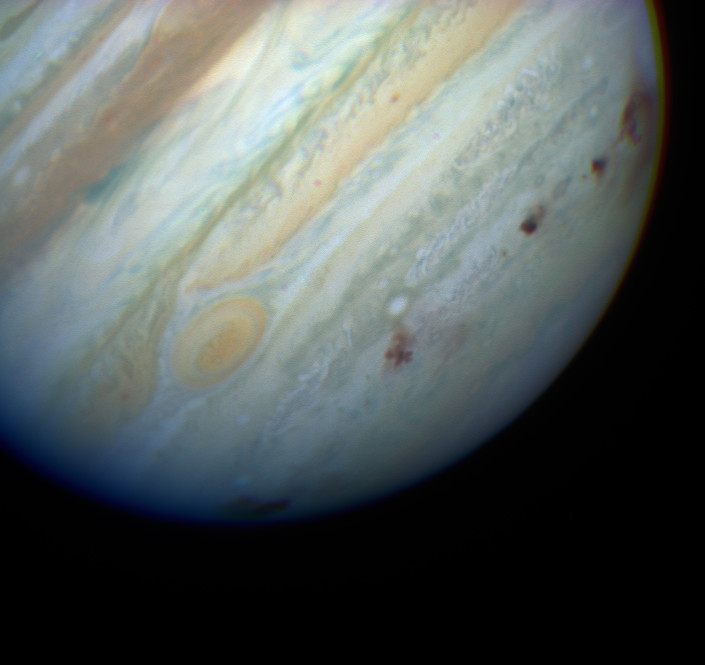
In mid-July 1994, Jupiter became the “arena” of a rare celestial show: almost three dozen fragments of comet Shoemaker-Levy-9 (D/1993 F2 Shoemaker-Levy 9), previously captured and destroyed by the mighty gravity of the gas giant, successively entered its atmosphere at a speed of almost 60 km/s. The dark spots left by them after the fall were observed for more than two years. Since then, astronomers have noticed at least three collisions of comets or asteroids with Jupiter, but all these events were much smaller.
On September 25, 2022, the largest planet was at a distance of 3.9526 AU (591.3 million km) from Earth — this was the closest approach to it since 1963.
Saturn
Almost all of 1995, the “Lord of the Rings” had an unusual appearance — its rings were arranged in such a way that from the Earth, we could see them almost from the edge. Since the thickness of Saturn’s ring system does not exceed several kilometers, for ground observers it simply disappeared for a while. Later, the rings reappeared, passed the phase of maximum disclosure, and in 2009, when the next equinox came on Saturn, they again briefly ceased to be visible. The next such disappearance is expected next year.
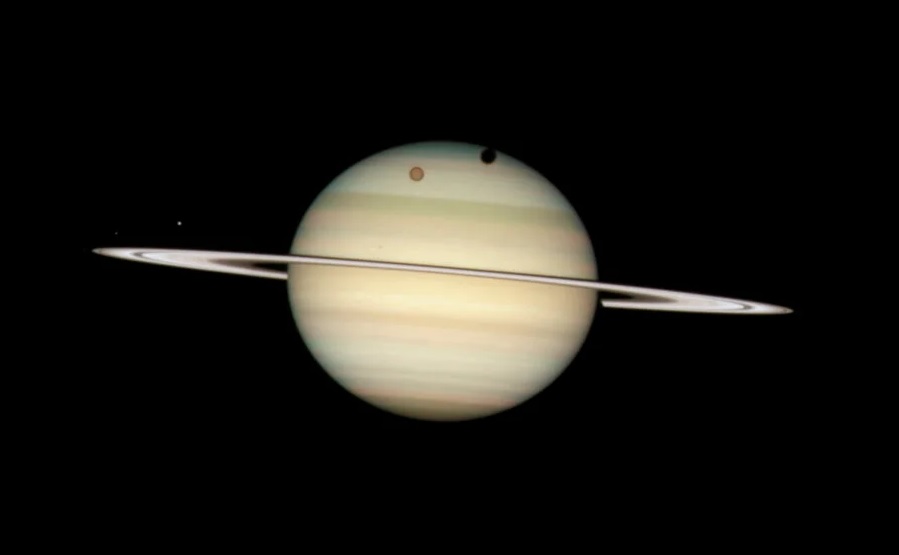
Saturn was closest to Earth at the time of independence on December 17, 2002, when it was separated from us by 8,052 au, so 1 billion 205 million km. To cover such a distance, a beam of light or a radio signal needs to fly for an hour and seven minutes.
Inner Planets
The most interesting and rare phenomena involving two planets located closer to the Sun than the Earth — their passage through the solar disk (transits). In Mercury, with its short rotation period, they happen much more often. From the territory of independent Ukraine, it was possible to see the completion of the transit on November 7, 1993; the transit on May 7, 2003, was observed from beginning to end, on May 9, 2016, and November 11, 2019, Mercury left the disk of our luminary after its sunset. The next Mercurian transit is expected on November 13, 2032.
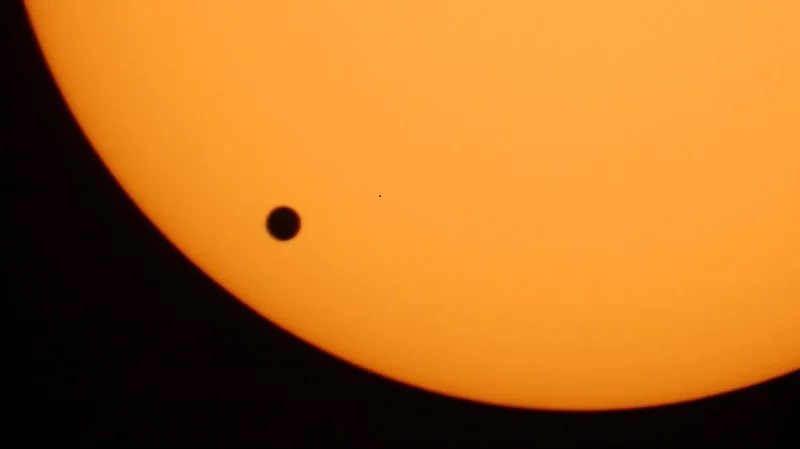
Venus “visits” the Sun much less often, its transits are in pairs with an interval of 8 years, separated by intervals of 105 or 121 years. Because of this, during the XX century, not a single Venusian transit from Earth was observed, the first of them took place on June 8, 2004. It was perfectly visible from the territory of Ukraine. The transit on June 6, 2012, for Ukrainian observers began before sunrise, but it was possible to see its end, including in Kyiv, despite the fact that the weather had been cloudy in the city for several previous days. Now the appearance of the nearest planet against the background of the solar disk is planned to wait until December 11, 2117.
Asteroids
On December 8, 1992, the asteroid Toutatis (4179 Toutatis), discovered four years earlier, passed at a distance of 0.0242 AU from Earth. It was the first natural kilometer-sized body that came so close to our planet during the time of independence. It is now known that its length is about 4.3 km. The flights of Toutatis were repeated every 4 years, and finally on September 29, 2004, it approached us by a little more than 1.5 million km. Then its brilliance exceeded the 9th magnitude. After 2016, the close rapprochement with it stopped, and it will resume only in 2069.
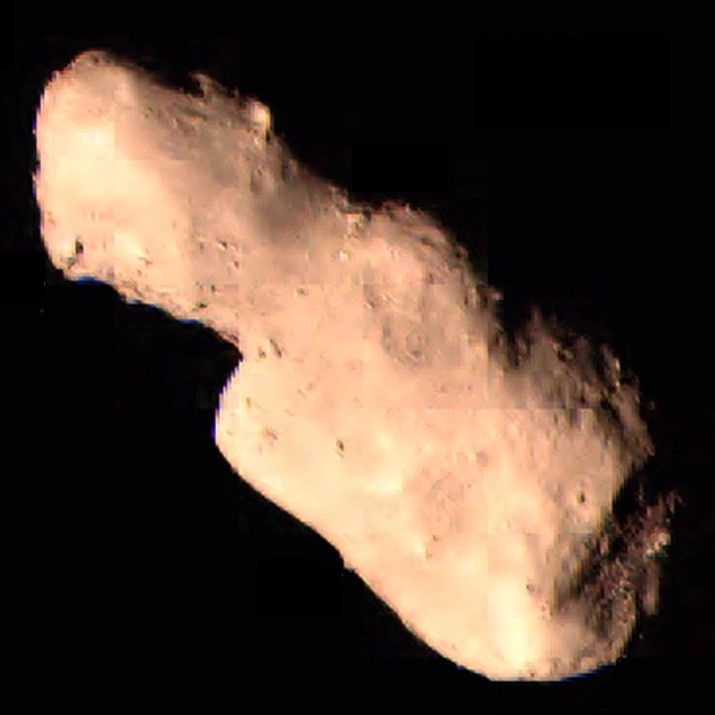
The largest asteroid that has flown past the Earth inside the lunar orbit since August 1991 (and in general since such observations have been conducted) remains the 300-meter object 2005 YU55. On November 8, 2011, it passed 324 thousand kilometers from us. Approximately the same size has the famous Apophis (99942 Apophis), which on April 13, 2029, will be at a distance of about 32 thousand km — this is less than the radius of the geostationary orbit. At the same time, it will be perfectly visible to the naked eye, including from the territory of Ukraine.
At the moment, without the help of astronomical instruments, we have the opportunity to observe only one asteroid, Vesta (4 Vesta). In June 2018, its brilliance reached 5.3 magnitude.
Comets and meteors
The first “tailed star” that could be seen from the territory of independent Ukraine with the naked eye was comet Swift-Tuttle (109P/Swift–Tuttle) — the “parent” comet of the legendary Perseid shower, which returned to the Sun at the end of 1992, after which it again headed to the far outskirts of the Solar System. Its next return is expected in 2126. By the way, during its passage, the Perseids became significantly more active: in 1993 and 1994, their maximum intensity reached several hundred meteors per hour.

The return in the spring of 1998 of the Tempel-Tuttle comet (55P/Tempel-Tuttle), which had a period of 33 years, caused powerful meteor showers. From 1999 to 2002, on November 17-18, under the condition of a clear dark sky, more than a thousand “falling stars” could be seen per hour. Now this shower is demonstrating moderate activity, its growth is expected in 2030.
Comet Schwassmann-Wachmann-3 (73p/Schwassmann–Wachmann) in 1995 began to disintegrate into fragments that were distributed along its orbit. In 2006, this “comet train” flew relatively close to Earth. Its “head” approached us on May 12 at a distance of 0.078 au (11.7 million km), and its “tail” on May 16 missed our planet at a distance of 0.059 au (8.8 million km). Comet debris continues to collapse, and it is likely that by the next close approach to them, which will happen in July 2070, nothing will remain of them.
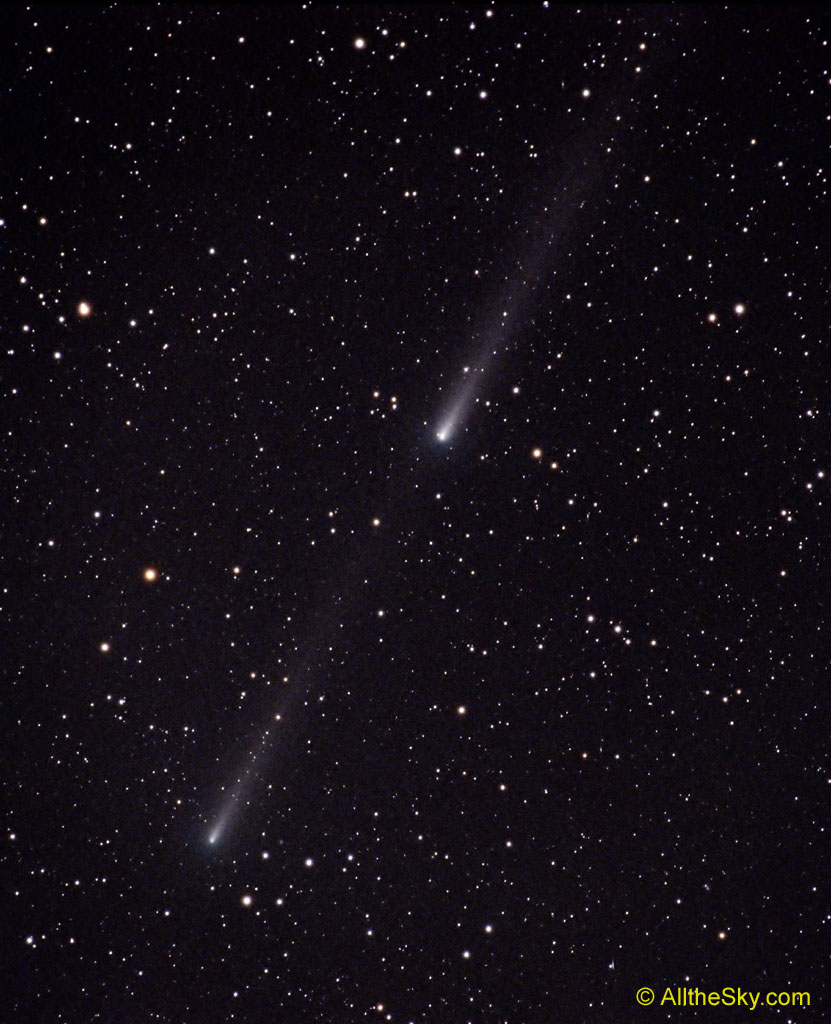
Interestingly, the closest passage of a comet in history also occurred during the time of independent Ukraine, but astronomers did not notice it. According to calculations, on June 12, 1999, comet P/1999 J6 (SOHO) appeared at a distance of 0.012 au (1.8 million km) from Earth. Apparently, due to the small size of the core, not exceeding several tens of meters, its brilliance that day “did not reach” the 15th magnitude. Such a weak celestial body, which also moved quite quickly against the background of stars, the telescopes of that time could not simply register.
And in May 2004, two comets appeared over Ukraine, the brilliance of which exceeded the 3rd magnitude — C/2001 Q4 (NEAT) and C/2002 T7 (LINEAR). Under the condition of a clear dark sky, they could be seen with the naked eye at the same time!
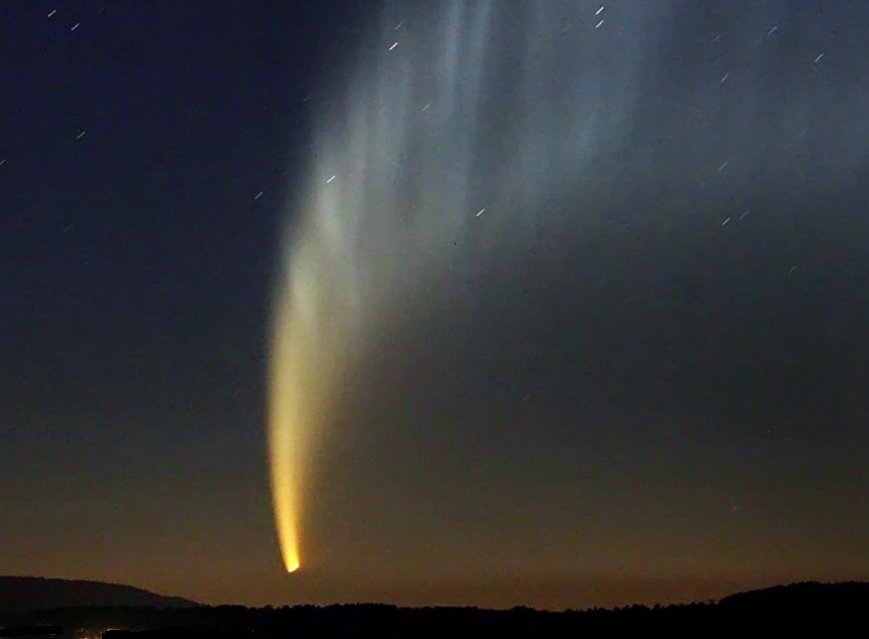
The brightest comet since the declaration of independence of Ukraine was visible in mid-January 2007. It became the famous comet McNaught (C/2006 P1 McNaught). Its maximum brilliance reached -7ᵐ, and despite the fact that the “tailed star” was in the sky near the Sun at that time, it could still be found if you just obscured the luminary with your hand. In our country, the conditions for observing this object were not the best, and residents of the Southern Hemisphere remembered it for its long and wide curved fan-shaped dust tail. Humanity had not seen such a bright comet since 1965.
On October 24 of the same year, comet Holmes (17p/Holmes), which had been observed just a few days before as a faint nebula of the 14th magnitude, suddenly increased its brilliance by 60 thousand times and turned into a bright object of the 2nd magnitude, which noticeably “distorted” the familiar figure of the constellation Perseus. It was the most powerful comet flare in the history of astronomy. Unfortunately, scientists do not know how to predict such events, and you can expect them literally every night. Keep a close eye on the night sky — and perhaps you will be the first to notice them!
Follow us on Twitter to get the most interesting space news in time
https://twitter.com/ust_magazine

